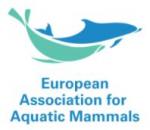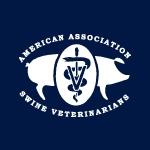March, 2014 news
March 31st, 2014
Via publiDB
Curso de Formación en los aspectos teóricos, prácticos y de base legal en el diagnóstico de tuberculosis bovina. XXI edition
Communications in this event:
- Actividades del EU-RL for Bovine Tuberculosis
- Aspectos generales de la inmunologĂa de la tuberculosis. Respuesta inmune innata y adquirida
- IntroducciĂłn a la tuberculosis (reseña histĂłrica, etiologĂa, sintomatologĂa)
March 28th, 2014
Via publiDB

Interacciones ecolĂłgicas aves-bacterias: implicaciĂłn durante el desarrollo de los pollos en el nido
Sonia González Braojos defended the PhD Thesis at the Faculty of Veterinary Medicine of the Complutense University of Madrid
The effects of bacteria on the development of birds in the nest have been barely studied under natural conditions and most of our knowledge about this topic derives from poultry as interactions between potentially pathogenic bacteria and chickens have economic and public health implications. In wild birds, there is scant evidence suggesting negative effects of gut bacteria on nestling growth. However not only gut bacteria may have effects on nestling growth as other microbiota such as those existing on the nest or on skin could affect development. Early development is a crucial determinant of …
Read more
March 26th, 2014
Via publiDB
Literature review of surveillance system and approaches for the early detection of new, exotic and re-emerging diseases
Poster presented in Society for Veterinary Epidemiology and Preventive Medicine 2014 Annual Conference
In recent years, novel methods have been developed to improve the early detection of exotic, new and reemerging diseases. These approaches, which are mainly risk‐based, have allowed to characterise better the patterns of disease presence and spread, as well as the populations and areas at higher risk, in order to prioritise surveillance and optimise resources. The aim of this review was to evaluate recent progress regarding novel early detection methods that could improve sensitivity and cost‐effectiveness while respecting the legal requirements that apply to conventional surveilla…
Read more
March 25th, 2014
Via publiDB
Curso de Formación en los aspectos teóricos, prácticos y de base legal en el diagnóstico de tuberculosis bovina . XXI edition. XX edition
Communications in this event:
- EpidemiologĂa molecular de la tuberculosis. AplicaciĂłn práctica de la base de datos mycoDB.es
- Actividades del EU-RL for Bovine Tuberculosis
March 20th, 2014
Via publiDB
Seminars VISAVET 2014
Communications in this event:
- Curriculum Vitae del investigador
- Bioseguridad en el laboratorio
- Experiencia de un veterinario en Nepal
- EpidemiologĂa espacial de la diarrea epidĂ©mica porcina en NorteamĂ©rica
- La resistencia a antibiĂłticos: de la Naturaleza al Hospital
- Nuevas aplicaciones basadas en la técnica MALDI-TOF en la investigación biomédica
- Leishmania: nuevos reservorios para una vieja enfermedad
- DetecciĂłn de carbapenemasas en efluentes urbanos: Âżun nuevo modelo de vigilancia epidemiolĂłgica?
- Actividades desarrolladas por los servicios de VISAVET ASISTENCIA: SEVEGAN Y SEVEMUR
- Bovine Tuberculosis and the EU-RL
- IntroducciĂłn a la HistologĂa Molecular mediante MALDI Imaging
March 16th, 2014
Via publiDB

EAAM 42th Symposium
Communications in this event:
- Herpesvirus in Beluga whale: relationship with appearance of lesions and routes of transmision
- Novel adenovirus in captive bottlenose dolphins: diagnosis and phylogenetic analysis
March 14th, 2014
Via publiDB
Las Armas de destrucciĂłn Masiva
Conference in VIII Curso de Altos Estudios de Defensa para Oficiales Superiores Afganos
March 11st, 2014
Via publiDB
Curso de Formación en los aspectos teóricos, prácticos y de base legal en el diagnóstico de tuberculosis bovina . XIX edition
Communications in this event:
- Actividades del EU-RL for Bovine Tuberculosis
- EpidemiologĂa molecular de la tuberculosis. AplicaciĂłn práctica de la base de datos mycoDB.es
March 6th, 2014
Via publiDB
What makes ASF different?
Oral communication in Taller : La peste porcina africana en jabalĂes
March 5th, 2014
Via publiDB
Master Universitario oficial en Produccion y Sanidad Animal
Communications in this event:
- Enfermedades Zoonósicas en Monogástricos/Otros: Influenza
- Control de la tuberculosis en jabalĂ: estudios de vacunaciĂłn
- Campylobacter spp. Papel como agente zoonĂłsico
- Brucelosis. Asignatura de Sanidad en los Rumiantes Domésticos
March 3rd, 2014
Via publiDB
Evidence of Leishmania infantum infection in rabbits (Oryctolagus cuniculus) in a natural area in Madrid, Spain
Investigation article published in BioMed Research International (Journal of Biomedicine and Biotechnology)
Leishmaniasis is one of most important neglected zoonosis and remains endemic in at least 88 developing countries in the world. In addition, anthropogenic environmental changes in urban areas are leading to its emergency world-wide. Zoonotic leishmaniasis control might only be achieved by an integrated approach targeting both the human host and the animal reservoirs, which in certain sylvatic cycles are yet to be identified. Recently, hares have been pointed out as competent reservoirs of Leishmania infantum in Spain, but the role of other lagomorphs has not been clarified. Here, 69 rabb…
Read more
March 2nd, 2014
Via publiDB

RNA particles: a novel application for efficient development of FAD serologic assays
Conference in AASV 45th Annual Meeting
March 1st, 2014
Via publiDB
The impact of a specific blend of essential oil components and sodium butyrate in feed on growth performance and Salmonella counts in experimentally challenged broilers
Poultry science publish this investigation article
Essential oils (EO) and short-chain fatty acids have potential antimicrobial activity in broilers. This study aimed to investigate the effect of a specific blend of EO and a combination of this blend of EO with sodium-butyrate on growth performance and Salmonella colonization in broilers. A total of 480 one-day-old male broilers were distributed into 5 treatments (8 pens per treatment and 12 birds per pen) and reared during 42 d in experimental conditions. Dietary treatments consisted of the addition of different doses of EO (0 mg/kg, control; 50 mg/kg, EO50 and 100 mg/kg, EO100) or a combinat…
Read more
March 1st, 2014
Via publiDB
The role of wildlife in bluetongue virus maintenance in Europe: Lessons learned after the natural infection in Spain
Investigation article published in Virus Research
Bluetongue (BT) is a re-emergent vector-borne viral disease of domestic and wild ruminants caused by bluetongue virus (BTV), a member of the genus Orbivirus. A complex multi-host, multi-vector and multi-pathogen (26 serotypes) transmission and maintenance network has recently emerged in Europe, and wild ruminants are regarded as an important node in this network. This review analyses the reservoir role of wild ruminants in Europe, identifying gaps in knowledge and proposing actions. Wild ruminant species are indicators of BTV circulation. Excepting the mouflon (Ovis aries musimon), European wi…
Read more
March 1st, 2014
Via publiDB
Máster en MicrobiologĂa y ParasitologĂa: I+D
Communications in this event:
- DivulgaciĂłn CientĂfica. Asignatura de GestiĂłn y EvaluaciĂłn de la InvestigaciĂłn


